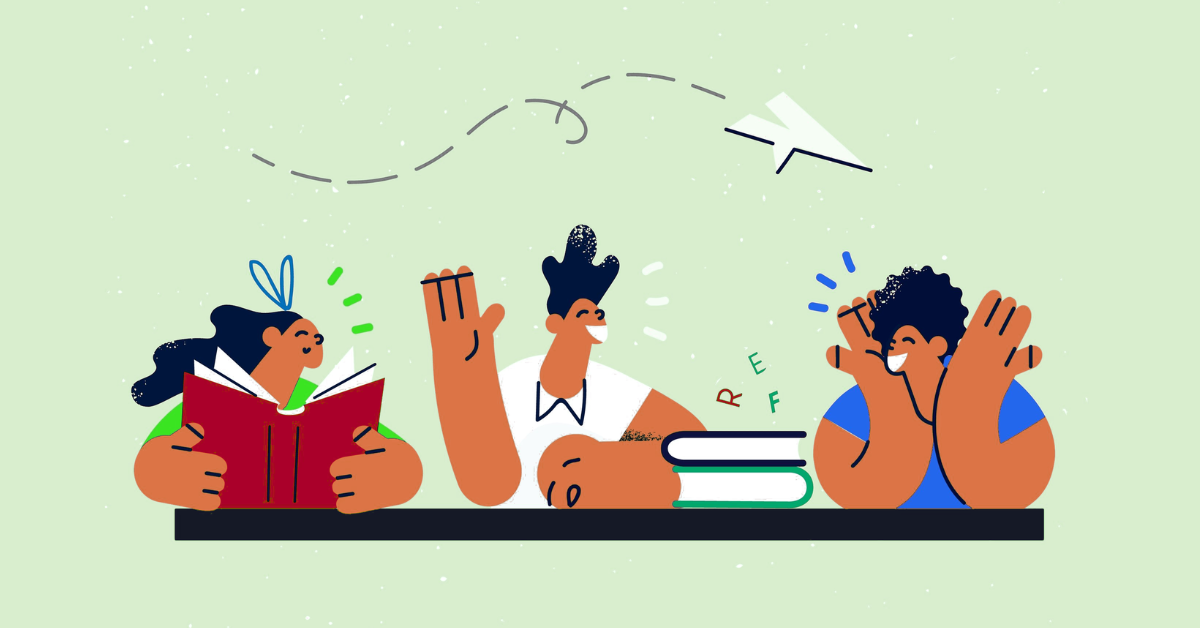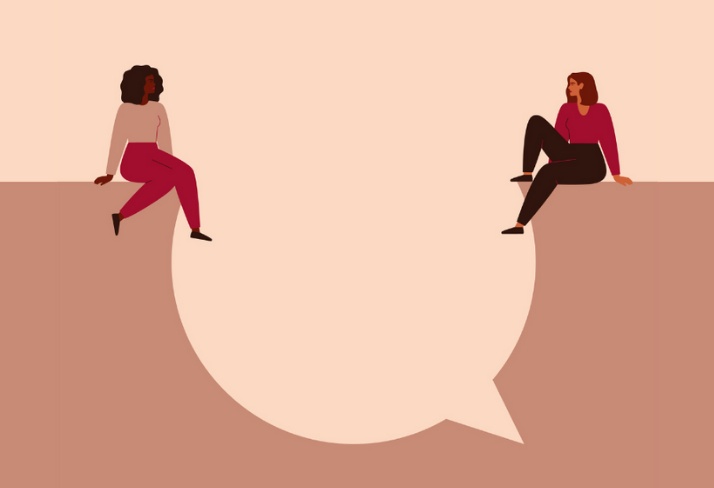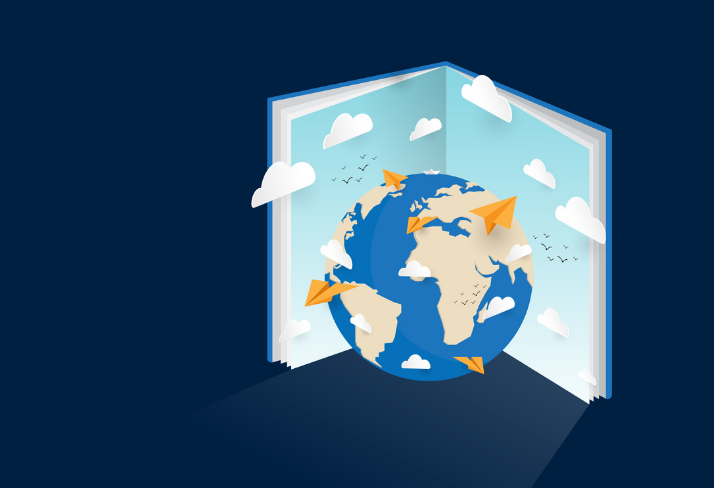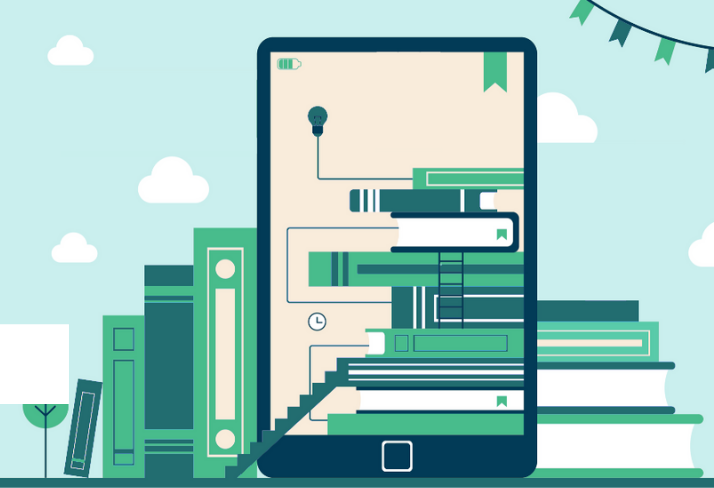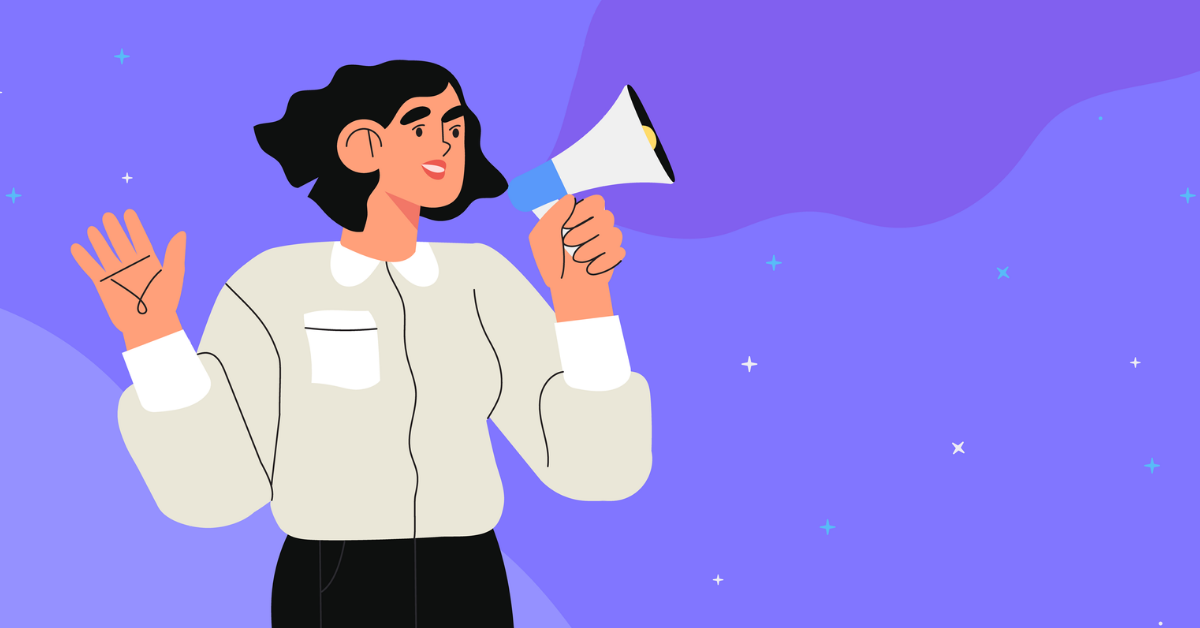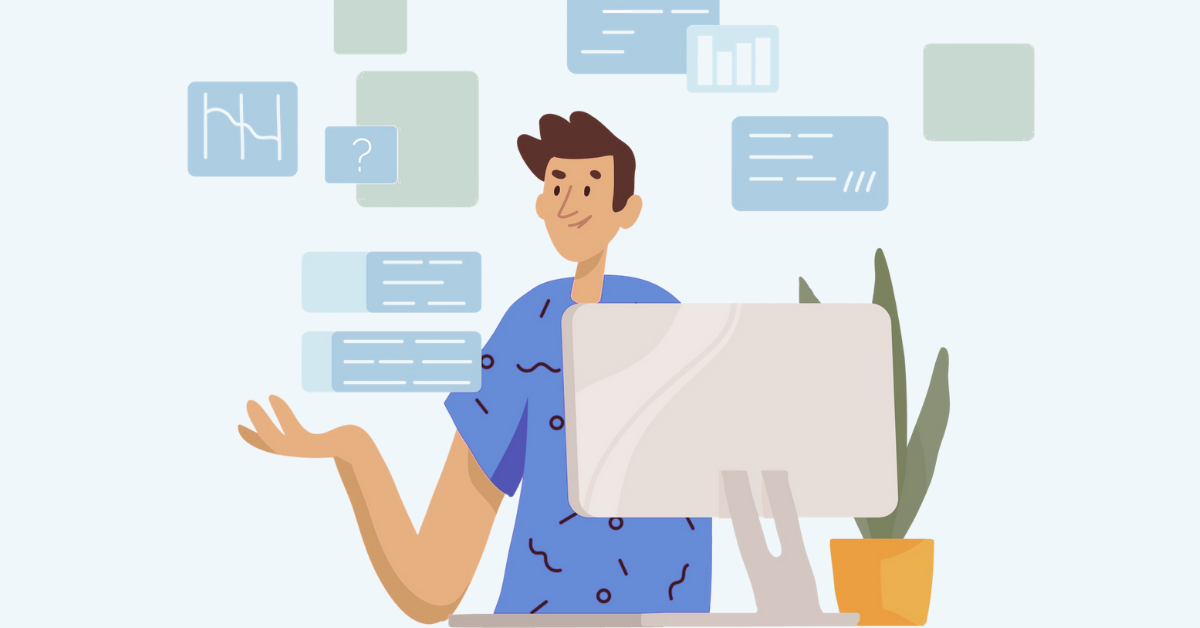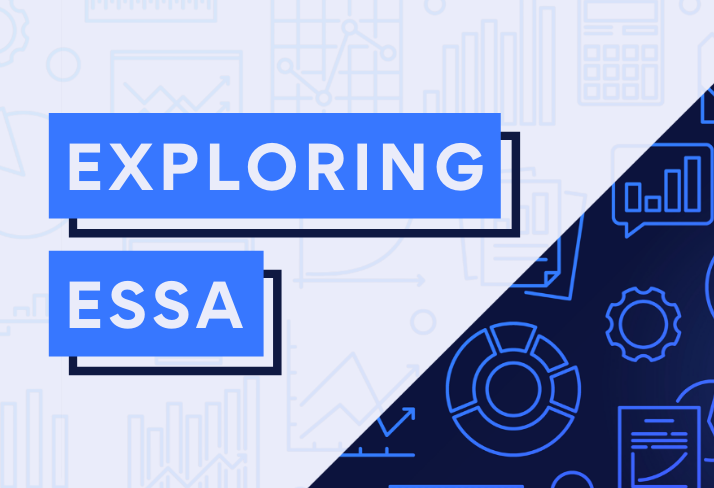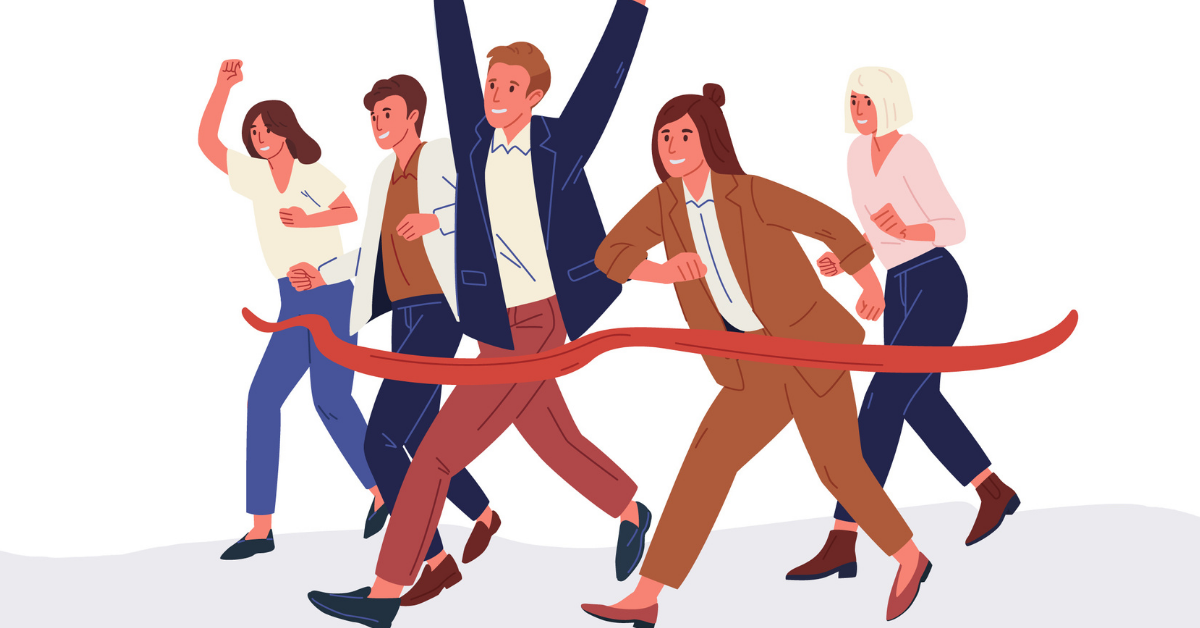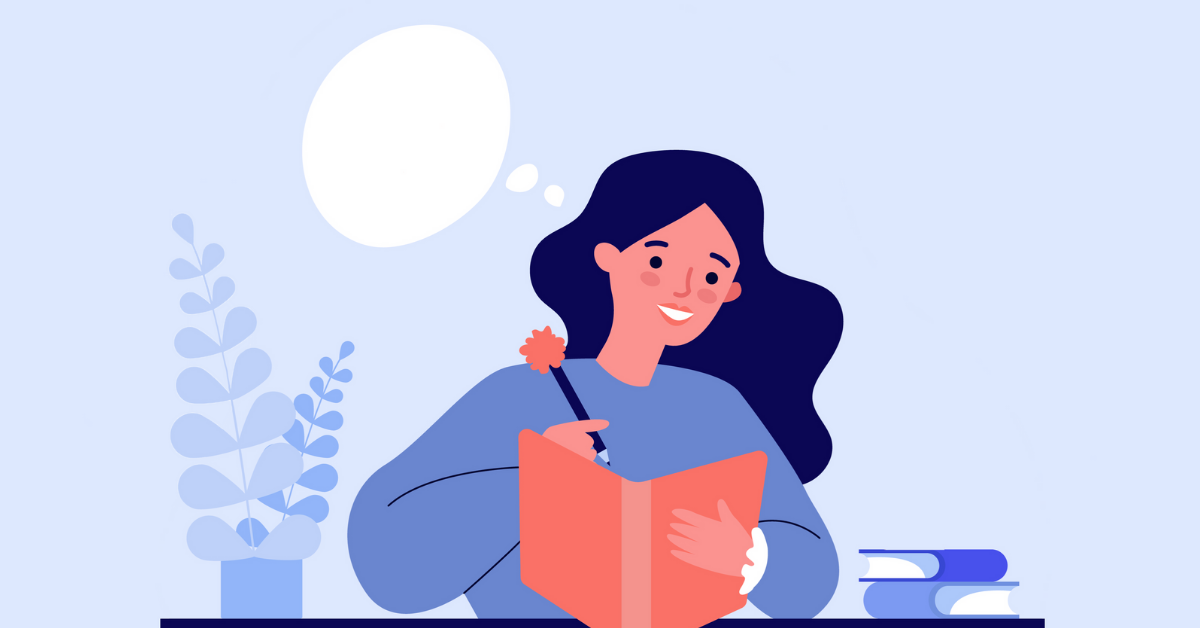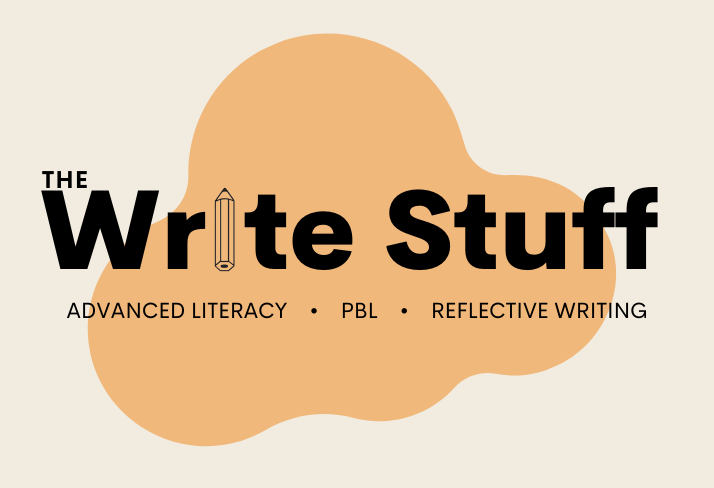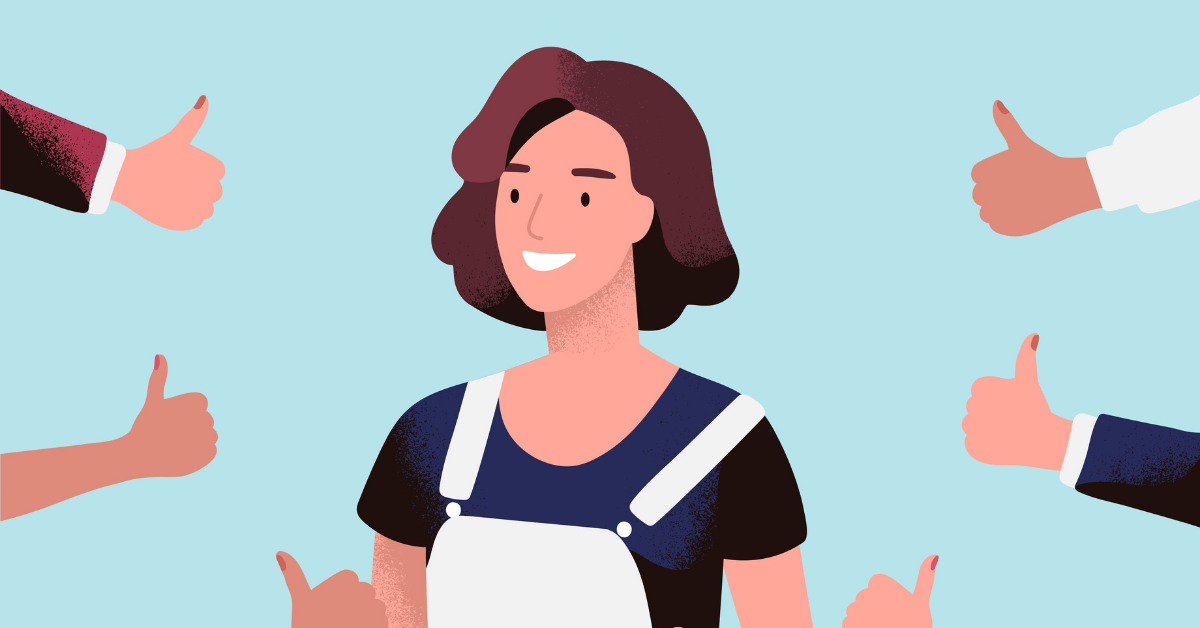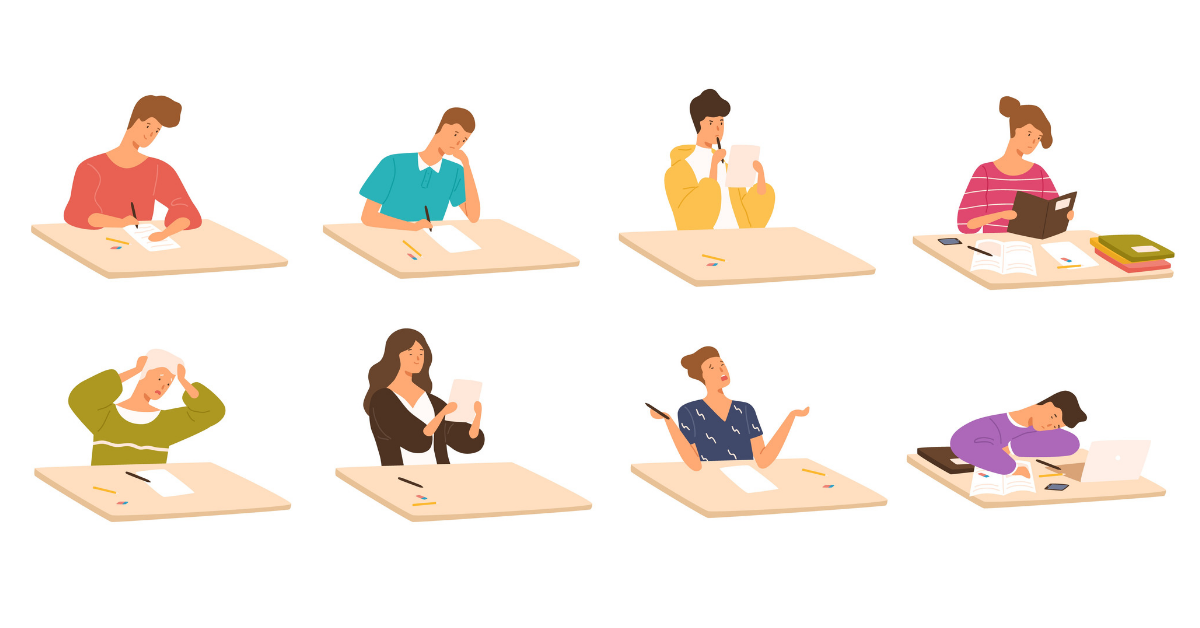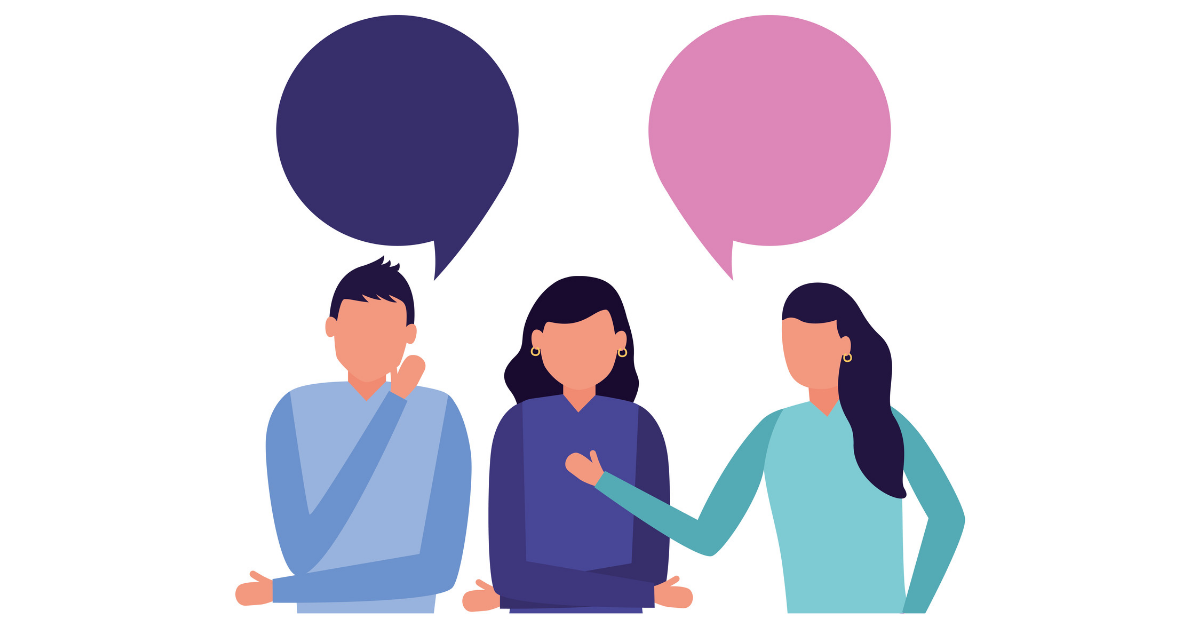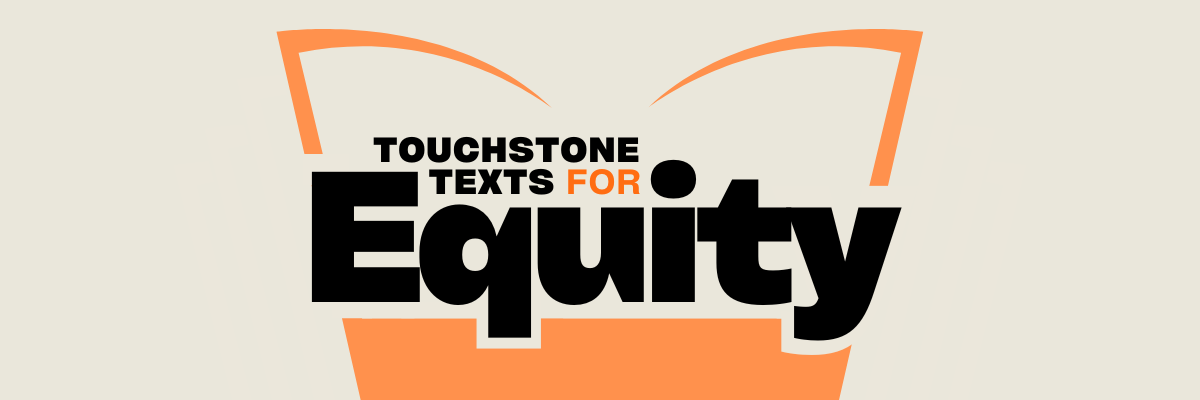|
Create and sustain a space in which students feel good about themselves and others.
This is the second installment in our Rethinking the Three Rs series
In the previous article in our Rethinking the Three Rs series, we discussed how to create clear and consistent routines that communicate classroom expectations to students. Here we explore rituals, offering some approaches to developing and implementing them in your classroom in order to support a positive and productive climate of collaboration, and fun.
How do rituals differ from and enhance routines? Daily routines often get you moving in the morning — you may have an alarm clock set, lunch made the night before and ready to grab, or even clothes laid out the night before. You may start the day by checking for messages from work to confirm the day’s schedule. If I asked you about the rituals that make your days and weeks more positive and also productive, you may mention how you like your coffee in the morning, what you listen to on your way to work, weekly phone calls to relatives, text threads with friends, meals or drinks on Friday nights, shows you watch, special events, and holiday traditions. Rituals make life a little more special and give us something to look forward to. They create and maintain connections and relationships. In the classroom, rituals help to create and sustain community and support an inclusive culture where all students feel welcome, safe, and appreciated, supporting students’ mental health by helping them build relationships with each other and feel connected and acknowledged. Rituals can help us all look forward to learning together. Acknowledge and celebrate
Rituals may happen daily, such as greeting students as they enter class; weekly with a Friday game or special assignment; or intermittently as you introduce protocols for discussion or presentations.
Greeting students at the door is an old ritual, however, I believe that it can create important daily connections between teachers and each student. This greeting can include whatever style of ritual works best for you and your students — positive acknowledgements, personal connections, reminders, noting progress, a fist bump, handing out paper, or simply a smile and meeting a student’s eyes. Touching base with each student at the door also helps us to take the pulse of students’ moods and may offer them a chance to let you know something somewhat privately. Keep these interactions brief and make sure that you have a routine for students to immediately access once they enter the classroom. You can also say “goodbye” to students as they leave the room! Rituals can also include silly and fun or sincere personalized responses to special events such or celebrating student progress. These rituals may be instilled as you start the year and can also develop authentically as you get to know your students. Events such as birthdays and holidays can be acknowledged or celebrated in a variety of ways — and students can be offered choices of how they would like their birthday to be acknowledged. I have witnessed some wonderful rituals where a student may make choices such as to sit in a special seat, wear a special crown, eat a snack during class, or choose a special treat. Finishing a long unit of study or a long book, or making progress on key goals can also be reasons for rituals to sprout, with a special game or assignment that encourages connection. Perhaps students can be asked to acknowledge a classmate for helping them in some way or making the week or a lesson more positive. You may also encourage “shout outs” as a way to invite interactions, as frequently as makes sense for your students. They can be quiet conversations, posted on a board, or invitations to share out with the whole class. To monitor and acknowledge progress toward the end of year Regents Exam, one teacher I work with creates groups that compete to gain points as they collectively improve their scores on components of the exam. They can choose prizes and eventually, each group does “win” something. Acknowledgements in many forms can help create and sustain a space where students feel good about themselves and others. Build connections across the classroom
The most simple everyday classroom rituals can help create connections between individual students and weave a web of interconnected experiences across the classroom .
Stop and Jot is one such deceptively simple ritual for letting students get to know each other through sharing and processing their learning. To help students interact with more than just their neighbors or “elbow partners”, you may want to ask students to turn to talk to students on the other side of them, or behind or in front of them. You may also ask students to get up and move around the classroom to compare notes about a topic with a classmate who doesn’t sit near them. This can be done by asking students to find other students who “share a birthday month” or “have a pet.” These playful ways of encouraging students to interact with a variety of classmates can help create a connected classroom where students have interacted with a range of classmates. Concentric Circles is a discussion protocol in which students stand in two lines, facing each other to discuss ideas and then rotate down the line to eventually meet with many classmates. (Students have often told me that this is one of their favorite ways of interacting in the classroom.) Four Corners is a simple strategy where students are presented with a controversial statement or question. In each of the four corners of the classroom, an opinion or response is posted, and students move to the corner with the posted response that most matches their own. This structure encourages students to speak to a variety of classmates in a self-selecting process based on their opinions. Finally, Rotating Chair is a simple way to offer students the opportunity to look across the room and call on a classmate. With this technique, students raise their hands to speak, and then the person speaking will call on the next speaker, etc. (aiming to call on a person who has not/has less frequently contributed). Whenever the next student is called on, they must first briefly restate/summarize what has been said before them, and then, develop the idea further. Encourage group work and discussion
There are so many ways to approach group work; however, it always works best when students have roles and clear expectations for their collaboration and what they need to produce or demonstrate individually.
In her article, Getting Into Groups: Differentiation Through Strategic and Flexible Grouping, Dr. Roberta Lenger Kang offers an approach to groupings that prioritizes the strategic partnering of students. According to Dr. Kang, “Strategic grouping is a key feature in teaching effective collaboration skills, and in streamlining instruction to meet the needs of our diverse learners. Strategic — or purposeful — groups demonstrate that we’ve put some time, energy, and thought into who students should work with.” While groupings can and should be changed based on student data, it is also helpful for students to stay in a group for up to 6-8 weeks so that they can get to know each other, develop working relationships, and have a “homebase” in the classroom. In an era when many educators feel that students are less comfortable speaking up or engaging in discussion, creating “comfort zones” is important. Protocols, roles and responsibilities for group work When students are assigned specialized roles in group activities, it supports the classroom community by helping them feel acknowledged, which is necessary to the functioning of the group and a part of a mini-community. These roles also encourage full participation and responsibility. In groups, students’ roles and responsibilities may depend on the task — humanities teachers may be familiar with variations of literature circles, but STEM teachers can also identify roles whether they are for lab work or reading and discussing a text, or even reviewing multiple choice responses. Here are some simple protocols for a variety of group work that you may want to explore and adapt for your purposes:
Try creating your own classroom rituals! They may arise naturally in your classroom — maybe students will take the lead in suggesting or identifying productive and positive rituals for your class.
After we have established routines and expectations for managing and structuring our classroom, rituals are the moments and experiences that create a warm climate for relationships and positivity to flourish and grow in our classrooms.
Create clear and consistent procedures that communicate classroom expectations to students.
The list of a typical teacher’s responsibilities is long — in addition to curricular work, lesson planning and implementation, monitoring and assessing students’ learning, offering feedback to students, parent communication, and so much more, teachers are also responsible for making sure that all aspects of learning and the classroom are organized and safe. The work can feel endless.
It is a hefty responsibility to plan for and implement procedures for all transitions or movements in and out and around the classroom. However, once you have developed and implemented some simple, clear, and consistent procedures, the work can feel less daunting and move more smoothly!
Locating routines
The initial notion of the Three Rs — Reading, (w)Riting and ‘Rithmetic — as the foundation of learning and education is clearly too narrow, especially as we move more firmly into the 21st century. Instead, reinterpreting the Three Rs as Routines, Rituals, and Relationships makes more sense as guiding principles for today’s classrooms. First, let’s take a closer look at how routines, rituals, and relationships help us make key decisions as we cultivate our classrooms. Rituals are different from systems and procedures, because their main goal is to create and sustain community and support an inclusive culture where all students feel welcome, safe and appreciated. Rituals may be instilled as you start up the year, and they will also develop authentically as you get to know your students. Relationships include the development of connections between teacher and student, and also amongst students and their families. This includes developing and maintaining relationships with students, restoring relationships when conflicts or tensions arise, and sustaining positive communication. Routines are often where we begin, as they are a crucial starting point to creating the classroom culture. They may be defined as systems for managing the complexities of a classroom space and any procedures for making the class run smoothly. I like to think of classroom management not as managing students, but rather as managing the space, whether it is digital, hybrid, or in person.
Setting up the space
Before we establish classroom routines, we need to set up the physical space and make choices about how best to use it. The way we set up our classrooms creates not only organized and smooth classroom operations, but lays the groundwork for a welcoming environment for all our students. Many factors determine the set up of the classroom, including how much space is actually available! Remember to be flexible and adapt your classroom setup — including your students’ seating — based on how your students work best together, your instructional goals, and your students’ evolving needs. Considerations & examples
Shaping seating charts
Just as important as how the basics of your classroom space will function is where your students will sit. Some of us may be ambivalent about using seating charts, as they might conjure up old-fashioned, controlling images of classrooms and teaching. Some teachers, on the other hand, swear by a seating chart in their classrooms. I encourage all teachers to start with a seating chart, even if it is simply alphabetical, so that you can get to know your students and also observe their interactions and dynamics. Then, after you’ve gotten to know the class better, you can make adjustments as needed. These adjustments can stem from observations about student behavior, but also from your instructional goals, as mentioned above. Ashlynn Wittchow reminds us to “let the space work with you, not against you,” and she encourages teachers to let students know that the seating and layout will change over time. Imagine Schools also offers some inspired ways to maximize classroom space while remaining flexible and student-centered. Considerations & examples
Shifting to routines
During my time as a teacher, I learned pretty quickly that not only setting up routines, but discussing and practicing them with my students, was key to making them meaningful for my classroom. Once my space was set up, I needed to consider how students would enter and exit the classroom, how we would handle the distribution or collection of materials, and even how students would re-enter class after being absent. Each of these pieces have an influence on students’ understanding of the roles and expectations within a classroom, which in turn, can impact their learning experience. Below are some typical categories for classroom routines, as well as some factors to consider as you make decisions, and examples of what these routines can look like in practice. Entering the classroom
Starting class
Distributing & collecting materials
Engaging in digital learning
Evaluating additional procedures
Ideally, we establish classroom routines at the beginning of the year, during a period in which both we and our students are engaging in a fresh start. However, it is never too late to re-evaluate or re-establish routines with your students, if you discover gaps in classroom management or that your students have outgrown existing structures.
Encourage meaningful reading habits as you ask students to engage in a dialogue with their text.
Over the past few years, I have heard more and more middle and high school teachers agree about how difficult it is to “get kids to read." I have observed myself that few students seem to be reading full length books independently, and by choice. Of course, there are so many reasons for these observations.
Let’s zoom out a bit to think about the state of reading for most of our students: in the past, reading was not only a major form of entertainment, but a crucial source of information. Time for reading was not in competition with an expansive, alluring digital world offering games, web surfing, Tik Tok, Instagram, endless TV and YouTube channels, etc. Even as adults, we know how easily accessible and comforting these modalities are. Technology offers us so many easy, even addictive options. Technology has also made it easier for students to “read” or pretend they have read an assigned text by scanning summaries of chapters, Googling quotations from the text, watching video versions, etc. Information that we may have needed to access by reading a book is now available at the click of a finger or by saying a few words to AI. We have all been there — we even have a term for this, tl;dr, or too long, didn’t read. Research confirms my own observations that few young people are reading on their own or consider “reading for pleasure." The Pew Research Center asserts that, “few late teenagers are reading many books” and a recent summary of studies cited by Common Sense Media indicates that American teenagers are less likely to read ‘for fun’ at seventeen than at thirteen.” The pandemic also seems to have derailed some students’ academic reading habits, which have proven to be like muscles that need to be exercised more regularly than we previously knew. All of this means that if we want our students to read, to become strong, confident readers, and maybe even enjoy reading, it is crucial for educators to make reading meaningful and relevant for our students, and not simply “cheat proof."
Encouraging students to read
Offering students choices of relevant books to read and discuss together in book groups or pairs is a fantastic way to encourage them to engage in reading. However, most educators agree that reading a book together — as a shared “anchor text” for the whole class — can also be important and lead to powerful discussions and collective learning. Mike Epperson — a teacher with whom I work closely in the South Bronx — took the opportunity to bring a shared anchor text to his 10th grade classroom, introducing his students to Elie Wiesel’s Night. While Night is a riveting, significant story and a relevant choice for 10th graders, who are concurrently learning about World War II and the Holocaust in history class, that doesn’t guarantee that students will engage in the reading. Mike was concerned about ensuring that his students were both engaged deeply and personally in the important subject matter and took it seriously. He decided early on that he wanted students to read the entire book. Mike strategically layered his teaching unit with Night at its core, along with supports and entry points to encourage high engagement, including: background building about the Holocaust, Anti-Semitism, and Judaism, and a careful sequence of lessons that focused on a key topic in a section of the book. Additionally, to encourage reluctant or less confident readers to read daily and remain engaged in reading the whole book, Mike emphasized and taught annotation. Since the school had copies of the book left over from ordering during the pandemic, Mike was able to give each student their own book to write in and keep. These two simple pieces — students having a book of their own and an opportunity to talk back to the text through annotation — created an environment ripe for close reading and high engagement.
Encouraging students to annotate
Getting students to annotate in their actual books wasn’t as simple as Mike had expected — he recalls that “when we first started annotating, some students expressed resistance because they didn’t want to make the nice-looking book look ugly. One student compared it to writing on a beautiful painting with crayon.” However, as time went on, students were “able to find a way to annotate that helped them preserve the beauty of the original text. I believe that as students took on a self-appointed role as the book’s preservationists, they ended up developing a deeper respect for the content of the book as well.” As the students connected more personally with the book and the character of Elie, Mike began to see that the act of authentic annotation was offering students an unanticipated opportunity for creative expression. He shared that “a lot of students like drawing, and there’s a similar appeal in annotation. While annotating is not drawing, a fully annotated page is visually pleasing. Some students’ annotations are neat, symmetrical, and visually appealing in a way that suggests that students take pride in how their annotations look. I think this fosters a sense of pride in the content of their annotations, too.” Mike’s observations of his students’ annotations confirm the belief that writing as you read makes your thinking visible, and can create an engaging conversation as we talk back to the text. He puts it simply: “Annotation gives the students a more active role in reading. They get to have a voice, even if no one else will see their annotations.” The students are no longer alone with a book. They are in dialogue.
Suggestions for successful annotation
When I visit Mike’s classroom, students eagerly show me their annotations and explain the significance of both specific lines on a page and their connections to larger themes. A number of students also tell me how much annotation is helping them “remember’ and “understand” past parts of the story. They are clearly proud of their text marking and meaning-making. Based on my observations of Mike’s classes, I’d like to offer some simple tips for making annotation a successful approach with your own students:
Hopefully, you will feel inspired to introduce or continue using annotation in your classroom! As you encourage students to read with their pen and engage in a dialogue with a text, feel free to adjust any of the strategies above to match the readers and annotators in your classroom.
Advice from the field on how to navigate the shift from teaching to coaching.
Teachers have always done much more than teach. They play a variety of roles, both in and outside of the classroom, and address needs or existing gaps in their school community. These roles may include mentoring other teachers, leading departments and grade levels, spearheading projects and initiatives, turnkeying professional learning, and serving as a dean or an assessment or technology coordinator.
It may seem like a natural move for strong teachers who are leaders in their own classrooms to step into a role as a leader in the larger context of their own schools; however, as with any transition, this shift comes with challenges. As teachers take on additional roles, the added work can create complications for both school administrators and teachers, especially in places where roles, responsibilities, and expectations are unclear.
Advice from teacher leaders
In my work with teachers, schools, and districts, I find it helpful to begin by asking questions that address common concerns surrounding this process: What are some challenges that arise as you step into a leadership role? What skills or tools do teachers need to possess in order to smoothly transition to the role of teacher leader? How can administrators best support their teachers as they shift their roles and responsibilities? To find answers to these questions, I turned to two wonderful educators with whom I work at a high school in the South Bronx — Leah Clark, an English teacher who has taken on the role of department lead and literacy coordinator, and is planning to move into school leadership; and Chris Mastrocola, who has moved from English teacher to teacher leader to Assistant Principal. They offered words of wisdom for teachers planning or hoping to move into a leadership role, and advice to administrators who are looking for ways to support teacher leaders in their community.
Becoming a role model
When I asked Leah about her recent experience of moving into her role as a high school department lead and literacy coordinator, she cautioned teachers to be mindful about which of their practices are successful in their classroom, but may not be recommended as a standard practice for the community. She notes, “When you take on a leadership role, you become more of a role model, and as a role model, certain practices that worked for you as a teacher may not be appropriate to share as a model to other teachers. What works for you may not work as well for everyone.” As an honest example, Leah notes that while her strategy of occasionally calling home during class — in front of other students — when a student didn’t show up for class or was late, may have had results, it could be seen as a questionable practice, and one that could even breach school or district rules. In hindsight, she wouldn’t recommend this to other teachers. In summary, Leah reflects: “The switch from being a classroom teacher to being a role model means that you have to think about what you recommend to other teachers and maybe even adjust your practices. As a teacher leader, other teachers look to you as a representation of the school’s policies and administration in a new way.” Chris Mastrocola, who moved from high school teacher to department leader, also echoes Leah’s reflection that teacher leaders need to recognize that everything they do or say is a model for others.
Communication counts
Leah admits that as she has moved into her new leadership role, she has had to become more conscious of how she talks about other people. She advises aspiring teacher leaders to “choose your words a little bit more carefully and be aware that your words and actions represent what you would like the staff environment to be. Sometimes you can’t say the things that you actually might want to say!” Chris also emphasizes that “everything you do or say as a teacher leader or school administrator can serve to help draw teachers and staff in to support the community, or alienate them — push them away from feeling like a productive member of the school community.” The importance of clear and thoughtful communication also extends to what teacher leaders need to receive from administrators, in order to feel supported and successful in their role. At their school, Leah and Chris both attest to the importance of the support of their administrators, noting that their principal, Santiago Taveras, consistently offers constructive feedback and opportunities for them to talk through challenges, finding both regular and impromptu times to meet to check in about how their work is going.
Shifting from teaching to coaching
In his assistant principalship role, Chris has taken on the role of instructional lead. While this is a natural evolution for anyone like Chris, who is an outstanding classroom teacher and curriculum planner, he quickly realized that working with adults — teachers — is different from working with students, and this shift demands new skills and perspectives. According to Chris, “As a teacher, with your students, you often feel it is your job to intervene in everything, but as a leader, you need to be thoughtful about not undermining teachers’ autonomy. Teacher leaders, like school administrators, need to strive to be patient and take the long view of change and development. You can fix and change systems, but not teachers. Development and growth takes time.” To me, Chris’s advice is crucial. We would love for all our teachers to be expert practitioners, able to step into the classroom and seamlessly juggle all the complications of teaching. However, like our students, and like any professionals, teachers are each learning and developing their practice at their own pace. It takes time. Chris highlights the importance of having a growth mindset and cultivating teachers’ strengths, as opposed to working from an evaluative, deficit perspective. He notes that when working with teachers, leaders can “help them identify their strengths and how to leverage them inside and outside the classroom — find out where you can support them to shine. Work alongside teachers to help them articulate their areas for growth — helping teachers to articulate in one sentence about just one specific area for growth is helpful to leverage change.”
Establishing trust and agency
Leah appreciates that at her school, teachers are recognized for the qualities and skills that they add to the school community, and are trusted with the opportunity for leadership. “Being a leader in your own classroom is the best place to start. Even if you don’t have a title, by leading well in your own classroom, you can spread positive classroom practices and classroom culture to your community.” Based on his experience, Chris suggests that as teachers move from classroom leaders to school community leaders, they can continue to contribute to a positive environment by adjusting their expectations — not only for themselves, but for their colleagues. He shares that when making the shift into leadership, it’s important not to come down too hard on yourself nor expect too much, and instead meet teachers where they are. Leah notes that trust is also a part of the equation, at all levels: “Be trusting of your colleagues and your community. You don’t need to micromanage departments or each teacher at your school to get the kind of impact and transformation of your school that you want. Trust goes a long way toward building agency and confidence for teachers and teacher leaders.” Chris’s final words about stepping into any kind of school leadership role feel important to hold onto: “You need to be kind to yourself in order to be patient and kind to the teachers in your community.”
Are you taking on the role of teacher leader, and wondering how you can bridge the gap between coaching and teaching? Check out Coaching for Change, which will support you in cultivating the strengths of teachers in your community, increasing your effectiveness as a team leader, and establishing confident, compassionate coaching practices.
Productively engaging students is a real challenge — but the solution may not be too far out of reach.
How can we create a classroom situation where all our students are productively engaged?
Engaging a class of students in a lesson can feel like a daunting task, with constant disruptions and more students off-task than on-task. It can be overwhelming! Setting up predictable routines and rituals for our students is key, and staying in touch with each of our students to help them engage with a meaningful task is a crucial element of creating a productive, positive work environment. The challenge is real — but the solution may not be too far out of reach. Our Three Sweeps resource (download here) provides a practical approach to getting all students on track and working.
The First Sweep
First, start students on an independent task like a warm up or “do now” prompt. The most effective opening activities are tasks that engage students in the topic or theme of the lesson using prior knowledge. As students enter the class, we can point them to the prompt and activate our first “sweep” by circulating through the entire class and “touching base” with each student using a light touch and offering an affirmation or posing a question, such as: Affirmations
Questions
This first sweep is designed to acknowledge the students who are cooperative and on task (early adopters) and offer those who are not yet settled a calming and supportive first “touch.” Let’s be real: students enter the classroom space in all different mindsets. We want to quickly and quietly acknowledge all of the students who are ready to work, and also have a personal and positive first contact with those who need more support to transition into their classwork. The first sweep communicates the expectation that you are recognizing each student in a supportive way, and it necessitates a personal exchange with each student. After we’ve made contact with each student and either affirmed their engagement or redirected them to the task, we begin our second sweep.
The Second Sweep
Our second sweep is a second opportunity to touch base with all students, with a focus on supporting off-task or unsettled students settle into their work. To start Sweep 2, quickly scan of the room and identify students who have not yet begun the activity. Maybe they’re talking or walking around the room, or maybe they’re distracted. Prioritize a second check-in with these students. Now, the contact and questions with students can include slightly more pointed questions to pinpoint what may help each individual student engage in the task at hand. Depending on the specific situation with each student, and the prior exchange, these questions and comments may include:
Students in Sweep 2 will benefit from a next step action:
Often, we lean on negative interventions with students who exhibit off-task behaviors, calling out students’ names in front of the class, asserting the rules or expectations, or publicly demanding a change in action. Unfortunately, these tactics are more likely to antagonize students who are struggling to connect with the work and can escalate tensions and increase students’ insecurities. The second sweep more deeply acknowledges each student’s specific needs and offers them advice or a tool to get to work. It should be done as calmly as possible with the expectation that students will respond productively. As much as this sweep is about positive reinforcements, it’s also about accountability. If a student says there are no barriers to begin their work, then there are no more excuses, either. If there are barriers to beginning, we want to know so we can remove them and work with kids so they can fully access the assignment. Now, it’s time for Sweep 3.
The Third Sweep
In Sweep 3, we return to a touch point for every student in the class. For students who have been working well for the duration, this is the time to check for understanding, affirm their progress, clarify any questions, and identify any obvious misunderstandings in their work so far. For students who are still struggling to engage in the task, we restate our purpose and return to our redirection questions. Restating the purpose is an important moment to communicate a shared expectation and explicitly outline the value of the task, and the community expectations. Affirmations
Clarifications
Restating Purpose
Redirect Questions
Notice that in these questions, we’re really focusing on asking the student to provide the solutions. When students choose to engage, or offer a suggestion for what would help them work better, they are more likely to implement the strategy they suggest, even if it doesn’t seem genuine to us in the moment. This is a key factor, because when we respond defensively to students who may show up distracted or disengaged, we can fall into exchanges that are more about power and control than they are about learning. We want to remember that — especially when we’re striving to develop a culture of high expectations in a positive work environment — it's critical that we find the path to engage all students in meaningful work. That might mean setting aside our personal feelings, and staying laser focused on helping every student to engage in the task.
Making the most of each sweep
Getting used to the three sweeps may take a little time and a little practice, but we’ve found that this is a highly effective strategy throughout the class period. Each sweep ensures that every student has at least two personal interactions with their teacher(s), and that students struggling to engage in the content have at least three positive and proactive exchanges with their teacher(s) — each serving as an opportunity to engage. To maximize the use of Three Sweeps, consider these quick tips:
Three Sweeps can be a shortcut to student engagement and creating a culture of learning. When we get everyone involved and engaged, we can focus on the learning and build momentum towards deepening our students' content knowledge and skills on a daily basis.
Simple steps to support students as they assess the validity and intentions behind informational sources.
Once upon a time, being literate was as simple as being able to read, write, and do arithmetic. As educators, we also know literacy is a social construction, and being literate implies that an individual has the ability to interpret, produce, understand, and interrogate language appropriately. However, our understanding of what it means to be literate in the 21st century has been further complicated by the myriad of “literacies” we’ve come to recognize, including:
As the definition of literacy has broadened, so have the modes for finding and sharing information. This has increased exponentially with advances in technology, and is indicative of the natural shift in our understanding of 21st century literacy. The need to use multiple literacies to unpack information is tied to the need to interpret the many formats, sources, or media through which we obtain information. For educators, the challenge becomes more about how we need to teach students to interpret and assess information — not simply how to gain access to it.
The trouble with technology
Literacy development that includes technology can both support traditional literacies, and introduce new forms in the classroom. Technology can support each literacy type listed above by helping students gather a range of sources that will support them in discussing their ideas. Between smartphones, tablets, voice commands, and even Alexa, information is readily available everywhere. This is great, right? Yes, except that we are finding more and more examples of misinformation and disinformation in our daily diet. Recent articles in the New York Times and other educational sites such as Teaching Kids News further explore this topic, and emphasize the importance of understanding what it means to be literate within the context of this information-heavy era. Even if accessible information is every educator’s dream, we should not simply be giving fish to our students but rather, teaching them to fish — bolstering their literacy skills by helping them to make sense of the information around them by means other than traditional reading and writing. By teaching them how to assess the validity and intentions behind informational sources, we can empower them to raise concerns, and to verify unfamiliar or questionable sources.
Understanding misinformation & disinformation
According to Business Insider, the term misinformation refers to information that is false or inaccurate, and is often spread widely with others, regardless of an intent to deceive. Some of us may have done this ourselves and later realized that we misunderstood what we were sharing. Remember the game of telephone? One person would talk to the person next to them, and their words would travel from person to person around the room. At the end, we would often laugh at how distorted the original message had become from between the first person and the last. That is misinformation. Misinformation can turn into disinformation when it's shared by individuals or groups who know it's wrong, yet continue to intentionally spread it to cast doubt or stir divisiveness. Often, disinformation — or what some may call “fake news” — is generated to be deliberately deceptive. As educators become clearer about the distinction, it can be better communicated to students.
Emphasize how, not what to think
To combat misinformation and disinformation, it is essential that we teach our students to become critical thinkers. Learning critical thinking skills can also enhance academic performance by developing judgement, evaluation, and problem-solving abilities. This skill also transcends into practical aspects of daily life, and ultimately into college and career readiness. We can promote these skills by letting students know that we do not have all the answers, and instead offer them opportunities to unpack and understand information on their own.
With so much information at our fingertips each day, the importance of critical thinking skills cannot be overstated — it is imperative that we teach students how to interpret facts and assess the validity of informational sources. These skills will allow them to investigate the information they’re receiving, and identify misinformation in the process, helping them to become truly literate for the modern world.
One school's success with unpacking the COVID crisis through project-based learning.
Educators are our superheroes, not because they can swoop in and solve all the big problems, but because they create spaces for students to explore and discuss real issues and pose real solutions. When we offer students the opportunity to engage deeply in meaningful, relevant problems, we can build student confidence and offer them agency over potentially frightening issues.
When our society seems rife with complex problems, it’s the perfect time to introduce problem-based projects. But before we look at an example of a problem-based project, let’s look to the roots of project-based learning to deepen our understanding of its principles. Problem-based learning can be linked to R. C. Snyder’s “Hope Theory” which promotes agency and hope — crucial concepts, especially for our students during a time of societal upheaval. The positive psychology behind “Hope Theory” is: “simply put, hopeful thought reflects the belief that one can find pathways to desired goals and become motivated to use those pathways.” Of course, this speaks to one of the goals of problem-based learning for students, which is to develop, practice, and apply key skills to real-world issues. When we get more ambitious, these problem-based projects may even expand across disciplines and become interdisciplinary projects! Elementary school teachers often do a great job of working across subjects in their own classrooms, but for middle and high school, where subjects are generally taught discreetly by separate expert teachers, implementing projects across disciplines may seem more daunting. It can sound complicated, but as our classrooms increasingly shift to online learning spaces, classroom walls and clearly delineated class periods are no longer barriers, offering us opportunities to work more easily with our colleagues across classrooms and disciplines.
Implementing a schoolwide interdisciplinary project
As an instructional coach and teacher, I understand just how complicated planning for blended learning can be; however, I have been inspired by how educators have used the blended and remote learning spaces as an opportunity to innovate, develop, and implement projects. As we moved into remote learning during the early phases of the COVID-19 crisis, I was working as an instructional coach with the Academy for Computer Engineering and Innovation 2 (AECI2) as it started up its first/founding year as a high school in the Bronx. While the energetic, innovative teachers and principal always gave their all to the students, nobody envisioned that by the end of the school year, we would actually collaborate remotely to create and implement the Living History Project — a remote, school-wide interdisciplinary project that culminated in a call to action letter writing campaign and a community-wide presentation. As the initial months of online learning continued and COVID-19 began to seriously impact our community, we realized that our students needed productive ways to synthesize and make sense of what it meant to be living history. Recently, I met with two of AECI2’s lead teachers, who initiated and coordinated this interdisciplinary project — Chris Mastrocola, an AECI2 English teacher and the school’s technology expert, and Joyce Brandon, the 9th grade math teacher. They offered some valuable insights and tips into successfully developing and implementing interdisciplinary projects, which can be a helpful starting point for developing your own project. Please note that these steps do not need to be followed in order. Different starting points work better for different contexts and communities.
Collaboration & communication are key
To coordinate all pieces of an interdisciplinary project, Chris suggests establishing regular planning meetings, and making sure that one teacher from each discipline joins an interdisciplinary planning team to meet and work on the project. As our project progressed, weekly meetings focused on different topics relevant to each stage of the project. Regular meetings are not only important when first starting a project, but help keep it moving at each stage of the process. Based on our experiences, here are Chris’s suggestions:
Choosing a problem-based topic
How do we choose topics for projects? Do teachers or students drive that decision? Or, do project topics naturally reveal themselves? I’ve found that the most productive projects are those that arise as authentically as possible, driven by a current, complex societal problem. We generally know a topic is worth investigating when our students show an interest in it and are posing genuine questions about the issue. At AECI2, the challenges created by the COVID-19 pandemic and the necessity for coherent local and federal governmental responses were the problems that naturally drove and inspired our project. Students were concerned about the impact of COVID-19 on their own lives and the lives of others. Living in quarantine and practicing social distancing, they were raising questions with teachers about the impact of the disease, how to manage it societally, and also how to cure it. This pointed us to a natural focus for our project. Joyce reminds us that when choosing a topic to explore, we need to be aware of how the students may experience it. For example, at the time when the students started the Living History Project about the COVID-19 pandemic, they were living in a community with the highest numbers of cases and deaths from the disease in the United States. Joyce points out that when we are living among the numbers, we need to be sensitive to the trauma or hopelessness that students may be feeling. Moreover, when our students are members of a community that is disproportionately impacted by an issue, or has historically been marginalized, we want to make sure that the chosen topic or project isn't accentuating students’ sense of hopelessness or powerlessness. Rather, through research and knowledge-building and a call to action approach, we believe in the power of project-based learning as a way to offer students a sense of agency and empowerment.
Defining essential questions
Collectively, we developed essential questions about the problem of COVID-19 to drive our project. Grant Wiggins and Jay McTighe, the authors of Understanding by Design explain that essential questions are “not answerable with finality in a brief sentence.” Their aim is to stimulate thought, to provoke inquiry, and spark more questions. They are “broad, full of transfer possibilities” and “cause genuine and relevant inquiry into the big ideas and core content.” Essential questions can help the teacher maintain a focus on the goals of the unit or project, and also stimulate inquiry, discovery, and meaningful connections for students. Here are the Living History Project’s problem and essential questions that we developed: Essential question:
Guiding questions:
Project assignment prompt:
Student responses to each of these recommendations were informed by their explorations in social studies, math and science classes, and written in their ELA classes.
Defining project goals
A major goal of this project was for students to synthesize and apply their research and learning from math, science, and social studies into a coherent set of recommendations about how to address the COVID-19 crisis. We also wanted students to feel empowered and have some agency over an overwhelming situation that was affecting their own community and lives. As you work to establish your own project goals, consider which key standards will be assessed by the project. In this case, we knew that literacy across science, social studies, English, and even math all incorporate argument writing and skills. Each subject teacher identified the key standards addressed in the project.
Backwards planning to teach key skills
Chris and Joyce both attest to the importance of breaking the final assessment product into parts in order to create a plan and teach all necessary skills. Joyce quickly realized that in her Algebra classes, students needed to really be taught to read and analyze data in charts and graphs, and at the same time, they were learning these skills with a heightened sense of importance as they applied their findings to their recommendations for addressing the COVID crisis. Joyce also cautions that percentages are hard to understand — students, and many adults, can't really conceptualize such large numbers, such as the number of people testing positive for COVID, so she began to use comparisons and analogies that were more accessible to students. The English teachers at AECI2 recognized that students could use some instruction on letter writing, as well as time to revise and edit their letters. So, we decided that the students would organize, revise, and edit their final letters in their English lessons as a final phase of the project. In social studies, Brett Pastore reviewed a range of documents and images with students, highlighting epidemics throughout the ages, including the Black Plague and the 1918 influenza epidemic. From analysis of these documents, students made connections to the COVID-19 pandemic and drew conclusions about how to address the current situation. And in her Living Environment class, Samantha Cunningham developed a series of lessons for students to learn to analyze data about the health impacts of COVID-19. Finally, the project was handed to the school’s technology teacher who designed lessons to support students in the final phase of the project, as they formatted and uploaded their projects to Padlet.
Backwards planning for each subject
This project expanded across the disciplines as, together, teachers identified how students would complete components of the project in their classes as they worked toward their final product — the call to action letter. Teachers identified the key skills and steps for their subject areas, and developed a sequence of lessons through backwards planning from the final product. To incorporate the students’ investigations and learnings about the pandemic from across disciplines, we decided to ask each student to contribute a paragraph with specific recommendations, using data and evidence from each of their subjects — Algebra, Living Environment, and Global History. They would then craft and revise their letters in their English classes, applying all the components of argument writing that they had studied. Students also made connections between subjects — for example, in math, students referenced what they know about pandemics throughout history to make sense of questions such as do these numbers make sense?, and how are these data related to the data from earlier epidemics?
Outline a final assessment product
Our final product was a call to action letter, addressed to a politician and offering three recommendations on how to address the COVID-19 crisis. The final presentation was presented on Padlet. All students published their final project with the following components:
Plan for presentation/publication of the product
For this project, we relied on platforms that AECI2 teachers were already using — Google Docs for teachers’ planning, and Google Classroom for interacting with students. Building on familiar systems that are already in use is helpful for any project, especially one with this level of interdisciplinary collaboration. To present their work to teachers and peers, students first created a presentation using Google Slides, with a slide for each of the following components:
Students also included artwork and excerpts from their journal entries about the pandemic, and uploaded their final presentations to Padlet, where it could be shared with the school community for feedback and comments. At AECI2, we decided to use Padlet as our publication platform, since each student could easily add their own post to a school-wide wall, and other students could easily comment on it. With more time, we could have expanded this opportunity and supported students in filming their presentations using Screencast-o-matic or something similar, which would allow for more connection between members of the community.
Benefits of problem-based projects
Here are some of the benefits of problem-based projects that we encountered with our partners at AECI2:
Problems in society can drive authentic projects, providing students with relevant topics that can build their confidence, allowing them to feel they have more agency over potentially frightening issues, and offering them an opportunity to pose solutions to real issues that are impacting their communities.
Our experiences with planning and implementing AECI2’s Living History Project not only showed us the benefits of problem-based learning, but how exciting it is to work across disciplines. We were able to increase interdisciplinary collaboration and work free from traditional educational barriers, such as time and space, as all teaching and learning was happening remotely. In our new educational spheres, the constraints of in-person teaching no longer exist in the same way, providing a gateway for exciting and engaging work with our students. The opportunities are endless.
Equitable practices empower students to recognize and develop their own talents and skills, and become agents of change for their futures.
What is equity? How do we define and use it in education?
Whenever there is a buzzword at play in education circles, we like to unpack, define, and interpret how the term applies to educators and schools. Let’s start with the difference between equity and equality. A simple, working understanding of equity involves “trying to understand and offer people what they need to enjoy full, healthy lives." In education, equity means truly striving to achieve the best possible outcome for each individual student. Equality, in contrast, aims to ensure that everyone is offered the same things in order to enjoy full, healthy lives. As educators, the notion of offering all people the same things immediately contradicts our understandings of differentiation. We know that not all students have the same needs. Furthermore, students from underserved backgrounds, generally low-income or students of color, may benefit from a variety of resources to succeed academically. All students benefit from equitable practices. I’d like to suggest that we not only offer students additional opportunities or resources to “catch up” or to “level the playing field”, but instead create a new playing field in education. We can start with our own assessment policies and systems in our classrooms, departments, schools, and districts. Creating equitable education and assessment practices doesn’t end with offering students what they need or deserve to succeed. Equitable policies and practices aim to empower students to recognize and develop their own talents and skills; to become agents of change for their futures. Equity means achieving lasting results for all people, regardless of their socioeconomic, racial, and ethnic backgrounds.
Examining our assessment practices
Equity work in any context may require seeing differently, thinking differently, and even working differently. Therefore, it may be helpful to start by asking ourselves some probing questions about our own assessment practices and beliefs. Consider discussing these questions at your next faculty meeting to norm understandings around assessments, or answering them individually, as a way to understand your own beliefs.
Creating equitable assessments
To work toward equity in education and in assessment, let’s examine our assumptions about educational achievement and assessment. Ibram X. Kendi, author of How to Be an Anti-Racist, explains how traditional testing policies perpetuate racist (and inequitable) ideas and policies in education. He explains that “achievement in this country is based on test scores, and since white and Asian students get higher test scores on average than their black and Latinx peers, they are considered to be achieving on a higher level.” We may not have the power to single-handedly change high-stakes testing policies that use assessment scores to measure educational achievement, but we do have influence over our curricular decisions and how we assess and grade our students. We can create more equitable curricula and assessment practices and policies to create more equitable education. To do this, we must:
Assess what we teach & teach what we assess
There are some basic rules of thumb that we can use to create a more equitable foundation for assessing students. As a starting point, we can simply ensure that we assess what we teach and teach what we assess. Backwards design, from Grant Wiggins and Jay McTighe’s Understanding by Design model, offers a framing to ensure that we first plan our assessments — including all the key teaching points and skills needed for them — as a guide to our instruction. Next, we “backwards plan” our units and lessons to ensure that we are meeting each of our teaching goals as we work our way toward the end of unit assessment. In addition to planning for end of unit assessments, we can also plan our formative assessments, which will help us understand students’ mastery of each discrete skill throughout our lessons. This will also create space to reteach concepts as needed, as well as ensure that we are offering students a range of possible opportunities to learn throughout a unit. When formative assessments reveal or confirm for us which students are struggling or need to revisit a concept or skill, we can differentiate how we reteach or review. If the teaching didn’t stick as we’d hoped the first time around, why would we teach it again in the same way? These practices can help us take initial steps toward ensuring our students are offered fair assessment opportunities, and we can build equity from there.
Differentiating assessments
Traditional assumptions about assessment may lead us to believe that asking students to complete different assessment tasks to demonstrate mastery may not feel fair — but it may actually be more equitable. I admit that early in my teaching career, the concept of differentiated assessments took me a while to grasp and to actually believe in. Many of us use differentiation expert Carol Ann Tomlinson’s helpful framework to guide our daily planning and instruction. We plan differentiated processes using a variety of scaffolds, tools, extensions, student groupings, pacing and modalities. We differentiate content in the form of offering or using a variety of “levels” of texts, math problems, and complexity of tasks. We strive to create a supportive and differentiated learning environment to meet a variety of students’ needs. But, when it comes to differentiating products or assessments, it is a little more complicated. Here are a few simple ways to differentiate assessment products to create equity:
Make assessments rigorous, not rote
Research shows that, especially in marginalized or lower income neighborhoods, lessons for students often focus on rote skills and procedures. Often, this means that students are not expected to achieve, nor learn more rigorous skills and content, when compared with their peers in higher income communities. As we know, rote and procedural learning tends to be boring, and when learning is boring, we often disengage or act out. This may become a serious equity issue in marginalized communities, especially for students of color, where, when students opt out of learning or act out, they may face harsh (or criminalized) punishment. Either way, students lose. Instead of focusing assessments on acquisition or mastery of rote skills or procedures, we can aim to emphasize reasoning and problem-solving skills. Research consistently proves that opportunities for supported, productive struggle can motivate students to stick with a task and to stay engaged as they learn. We all do better when we can engage in productive challenges.
Make assessments relevant
Culturally relevant curriculum and instruction create more equitable education for all students. Zaretta Hammond, in her wonderful book Culturally Responsive Teaching & the Brain, defines culturally responsive teaching as “encompassing the social-emotional, relational, and cognitive aspects of teaching culturally and linguistically diverse students.” She believes that when we teach with these concepts as our guiding lights, we create more equitable education. Similarly, we can create more equitable assessment practices if we offer students experiences that are adapted for their cultural and linguistic diversity and are cognitively appropriate and engaging. Here are a few simple ways to make assessments more culturally relevant or responsive:
Develop and maintain a growth mindset
We often think about how important it is for students to develop a growth mindset, yet, as educators, we need to take a hard look at our own biases and assumptions that things may be “too hard” for students. As Carol Dweck points out in the The Power of Yet, with scaffolding and high engagement tasks, we may find that students surprise us and we can reframe our thinking to become, “they don't get it yet.” Many factors contribute to a student’s mindset and development of a learner’s stance, especially a teacher's language and perspective. Here are a few simple ways to support a growth mindset for assessment practices:
Cultivating strengths and talents
As educators, our job is to cultivate students’ strengths, as well as help them develop in areas of struggle. All students benefit when teachers recognize and cultivate their passions, talents, and skills. Students also benefit when teachers recognize that a class or subject is an area where they need some extra support and that simply making progress is an achievement, even if their skills have not met or exceeded standards. When students are not achieving in a particular subject area, it may be time to think differently about how we assess them. It is possibly a waste of talent and potential if we expect students to spend academic time and energy striving to achieve in an area that continues to be a struggle for them. Instead, we can think more holistically about each student, in an effort to balance supporting improvement in areas of challenge with sponsoring soaring success in areas of strength. We can continue to cultivate and encourage a student’s passions and talents, even when assessing them. Measuring and recognizing ongoing progress and effort are important components of assessing a student’s learning.
Many of us were educated within systems that housed traditional or standardized assessment and grading systems. As educators, we have all consciously or unconsciously based a grading policy or assessment practices on the modeling we learned as students. It can take a leap of faith to imagine new and innovative assessment practices — but we must rethink our notions of fairness and begin to think about developing practices that are equitable for the students in our care.
Culture-building strategies that will help us build a foundation for our classrooms.
For educators, creating a positive classroom climate is key to a productive school year. Even halfway through the year, we can push restart and reboot our classroom culture. However, whether we’re starting or restarting the year with blended or remote learning, the notion of building culture may feel tricky, or at least different from what we’ve experienced in our brick and mortar classrooms. And when the school year is interrupted and unpredictable, it gets even trickier.
During this period of teaching with a pandemic pedagogy, we have an abundance of challenges to face. But we also have opportunities to reflect on our practice and bring our instruction into the 21st century. We can work alongside the current generation of students — who are digital natives — to not only support them in developing academic and social-emotional skills, but also bridge technological gaps in our community and meet the future head-on. No matter how our instruction is reaching students, we need to find ways to build and maintain connections — between us and our students, and between the students themselves. We’d like to encourage schools, teachers, and administrators to take the current challenges in our educational and civic reality as an opportunity to re-envision how we cultivate a conscious classroom culture and address our students’ social-emotional needs using 21st century digital tools, while deepening relationship-building and connectivity. Inspired by rich discussions with a range of educators from around the country on our Teaching Today podcast, we can outline some culture-building strategies that will help us build a foundation for our classrooms.
Teaching the tools
Ensuring that all students have digital access is the number one priority and starting point for equity in learning. Matt Mazzaroppi, Principal of the Morris Academy for Collaborative Studies in the Bronx, NY, reminds us that before a blended or online classroom culture can be developed, we need to ensure that getting technology into the hands of families and students is a priority in our community. In an effort to do this, Dr. Tangela Williams, Superintendent of Charlotte-Mecklenburg Schools District in North Carolina, began extensive efforts within her community to bring devices to students’ homes, as well as enhance local Wi-Fi offerings. But what happens when we have access to technology, but don’t yet know how to use it? Dr. Jenan McNealy, a guidance counselor in Atlanta, attested that one of the most important factors for online school culture in a blended or remote situation has been training school communities — including all teachers and families — how to use and maximize digital platforms and educational technology. According to McNealy, increased training for online systems has made a significant difference in her school district. Now, she says, teachers, parents, and families can navigate the systems well. In turn, they are better able to support students. As we shape the digital landscape within our school communities, we need to strategically use the digital tools available to us without overwhelming our students and their families with too many platforms.
Community & communication
Schools and districts agree that implementing strong school-wide communication is a good starting point for fostering classroom community during a turbulent time. Establishing school-wide communication tools and approaches is crucial to maintaining interactions with families and students throughout the day, as well as the entire school year. Just as we remain flexible about our teaching environment, we need to be flexible about using multiple forms of communication within our community. For some, texting works best, for others phone calls are more helpful, while some find emails easier to manage. Identifying communication preferences can help alleviate concerns about how to reach families, and when. Prompt communication to address lateness, absences, or missing work becomes a strong lever for maintaining community and student engagement, especially when most interactions are happening online. Students need to be acknowledged as crucial members of their classroom and community. Schools in which a teacher or guidance counselor promptly calls families and students when they don't show up for an online class have reported that it goes a long way in promoting student engagement. When students are acknowledged as critical members of their classroom and community, it can bring them back into the fold.
"Students read the teacher's energy and if the energy is real, they can relax.
If they relax, you can nurture the relationship. Once there is a relationship, students can learn." — Matthew Mazzaroppi, Morris Academy for Collaborative Studies Consistent connection & compassion If remote teaching and learning have taught us anything, it’s that we need to find ways to stay connected with students, and we need to help students connect with each other. In order to create an online culture that offers a positive learning environment for students, we’ll need to establish (and then be prepared to re-establish) norms and routines. How do we do that online? In this unpredictable educational landscape, it is crucial to create consistent programming and predictable online routines. Matt Mazzaroppi underscores that creating consistency is a clear priority: “After clear communication comes consistency. Consistency makes everybody feel safe and if they feel safe, they're open to a new culture, new relationships, and ultimately open to learning.” Dr. Roberta Lenger Kang explains that norms are “the things we should do versus rules, which are typically the things that we should not do.” It's the difference between the dos and the don'ts. If we believe in creating and setting a tone in any educational space, then being able to elevate expectations is important. Both online and in person, we need to create norms that offer clear expectations for student engagement, as opposed to rules with punishing consequences. G. Faith Little offers a vision of the classroom as being “more like a garden where we plant seeds and allow our students to grow to be the flowers that they were meant to be.” She believes that, as educators, we need to listen to students and their families in order to create norms that cultivate and nurture our students. Interestingly, norms that use a garden metaphor are also aligned with high-level evaluation on the Danielson Framework.
Acknowledging each student
We can't underestimate the power of greeting our students every time they enter our classrooms. We may feel that this a missing link in our online classrooms, but is it really missing? Many educators are finding unique ways to acknowledge students as they enter the virtual classroom everyday. Carolyn Lucey, a 10th Grade English teacher at New York City’s Charter High School for Computer Engineering and Innovation, with whom I work, greets each student as they enter her virtual classroom, explicitly takes attendance, and then throws a quick warm-up question into the chat, such as What was your favorite part of the weekend? or What word do you relate to today, and why? To model and connect, Carolyn generally offers her own responses as well. Dr. Laura Rigolosi takes attendance by asking each student in the “room” a relevant question such as, What was the best thing you did over the weekend? for a Monday class, or, related to the work at hand: What part of your project are you working on? Connecting with our students each day as they enter our virtual classroom is a key ingredient in engagement and relationship-building. The positive impact of a simple daily acknowledgement of each students’ presence and participation helps create a sense of belonging, and helps them feel recognized as a part of their community. Acclimating to online participation Getting students acclimated to participating in an online classroom is crucial. Clear instructions for them to use the unmute audio feature versus the chat feature for specific purposes can help to build consistent participation. As an example, consider asking students to use the chat or survey feature for closed or yes/no responses, and respond verbally to higher order follow-up questions. Students can also be encouraged to use the chat feature to share written or “stop and jot” responses, as opposed to unmuting to add spontaneously to discussion questions, which can be difficult to manage virtually. When questions are asked in a virtual classroom, most of us have noticed the long pauses before participants respond. Some students may not have strong WiFi connections, or may be in noisy spaces that make participation challenging. Asking students to use a “rotating chair” approach, in which they call on one another, helps develop student-to-student interactions, and can also help keep discussions moving. Breakout rooms for small group projects also offer students a chance to increase participation, and create an opportunity for regular interaction between classmates. Developing strategic, consistent breakout groups can help add to a sense of accountability and engagement, and working together in small groups creates a sense of community.
Each class — whether synchronous or asynchronous, in-person or online — is a precious space for connection and community-building. Setting clear expectations, offering students opportunities to connect, and modeling clear communication is not wasted time. Classroom culture is everywhere. Every move we make creates classroom culture — how we speak to students, how we interact with them, even how we think about them — and each moment is an opportunity to make each member of our classroom feel seen and heard. As Matt Mazzaroppi shares, “students can read the teacher's energy, and if the energy is real, they can relax. If they relax, you can nurture the relationship. Once there is a relationship, students can learn.”
Educators at all levels can benefit from working alongside a coach for continuous professional improvement.
The term “coach” often evokes memories of professional sports — like Phil Jackson and the Chicago Bulls in the NBA, or Don Shula and the Miami Dolphins in the NFL. Both coaches are credited with winning championships and encouraging athletes such as Michael Jordan and Dan Marino to become Hall of Fame inductees. But coaching is not limited to sports — and in schools, instructional coaches act as liaisons between research and practice, helping teachers learn to improve their practices in a reflective, supportive setting. Although instructional coaches may not enjoy the same salaries or notoriety as athletic coaches, they have become a policy lever for districts to improve instructional practice.
When establishing a coaching relationship or a professional learning community within a school, there are some essential questions to address: How does coaching work in educational spaces? What is the difference between coaching adults and teaching children? What are some of the practices that coaches use to support educators? How does coaching remain flexible and effective, regardless of whether the educators you’re working with are new to the classroom, or have spent years working as teachers, counselors, and administrators? No matter the situation, there is value in educators of all levels working alongside a coach for continuous professional improvement.
Student vs. adult learners
For most instructional coaches, the biggest difference in shifting from teaching children to coaching adults is recognizing the needs of adult learners. (For more on this, check out Stephen Brookfield’s work on Understanding and Facilitating Adult Learners). As educational coaches, we want to be as cognizant of what teachers need to learn, as well as how they will learn best. Our first goal is to create a safe and supportive community with multiple opportunities for reflection. Educators often experience feelings of isolation or uncertainty as they confront new challenges, in both physical and digital classroom spaces. Our goal is to name these challenges and equip educators with a toolkit they can use while teaching. We recognize that coaching in education can look different depending on the context, needs, and desires of the educator — it may include 1:1 coaching sessions and reflective discussions, team-building with small groups, facilitation of teacher teams, or whole school or even district-wide professional development opportunities. However, one thing is true regardless of the context: adult learners often ask, what’s in it for me? before investing their time and energy. Their time is valuable, and they need the learning experience to concretely further their professional practice. Adult learners also bring more experience and expertise to the coaching relationship. Coaches should strive to honor this knowledge, while simultaneously offering engaging, effective facilitation and reflection. Approaching vs. prescribing A core component of coaching work is the relationship. Whether it’s between the coach and the teacher, the coach and school administrators, or the coach and the faculty community, we prioritize the professionalism and humanity of our partners as we strive to get to know them personally. When teachers invite us into their classrooms, into their lesson plans, and into their most challenging professional situations, we know how important it is to be trustworthy, to listen with empathy, to ask questions, and respect boundaries. We are there as thought partners who can offer an outside opinion based on research and our own personal expertise. We recognize the strengths that each of our teachers bring and create opportunities to cultivate those strengths when in professional learning settings. Similar to students, no two teachers are exactly the same, nor will their approaches to teaching be the same — but we can support them in developing a teaching strategy and style that is consistent with highly effective instructional practices as they strive to meet students’ needs. Our work is guided by five principles of practice, also known as the 5Cs:
Knowing when coaching is working
How do we know if what we're doing is working? This is one of the best and maybe most challenging questions about coaching. In the context of many standards-based state and federal reform efforts, instructional coaches are playing an increasingly important role as “professional sense makers” who develop expertise in academic content standards to help administrators and teachers translate them into classroom practices. Because it can take time for a teacher to make the changes in mindsets that enable them to adjust teaching practices, instructional changes may occur in small increments. Therefore, measuring "effectiveness" is not a one-size-fits-all task. While coaching is often unpredictable, it’s extremely important to have a plan and clear goals, developed collaboratively between school leaders, teachers, and their coaches. By monitoring our progress toward the goals, we’re able to track leading and lagging indicators that represent changing practices. Smaller shifts — such as shifts in mindsets, the language a teacher uses, or small incremental shifts in their practice — are recognizable when a coach is deeply engaged in a teacher’s practice. In addition to tracking the leading indicators, or small shifts in practice, we can also look at the lagging indicators or larger moves that demonstrate significant changes over time. We look at three elements to determine effective coaching practices. First, we look to determine if teachers implement what they’ve been learning, or what they’ve been talking about with their coach. It demonstrates effective coaching if after a workshop or coaching session, the teacher begins implementing a strategy or practice they learned from the experience, even if it isn’t implemented with textbook precision. Trying something new is evidence that the coaching was impactful. Second, we look to see if the teacher begins to initiate requests for further support. Teachers who are finding coaching valuable often take the initiative to request additional support, articulate future goals, and ask specific questions to refine their practice. Finally, we want to be able to connect the dots between the coaching guidance, teacher practice, and an increase in student achievement.
Similar to athletic coaches that help professional athletes thrive and take their skills and talents to new heights, instructional coaches allow teachers to apply their learning more deeply, frequently, and consistently than teachers working alone. Coaching supports teachers as they improve their capacity to reflect and apply their learning to their work with students, and also in their work with each other. With supportive environments and thoughtful reflection coupled with sound facilitation practices, coaching can have a significant impact on teachers' practice.
One district's success with teacher-led passion projects.
COURTNEY BROWN
Senior Professional Development Advisor
When teachers are given space to imagine possibilities for their schools and students, time to refine their ideas, and the support necessary to implement new projects, what can they achieve?
Since 2017, we’ve been tackling this question through our collaboration with the North Plainfield, NJ district. In response to a statewide initiative to develop teacher leaders, the district leaders at North Plainfield tapped us to support this development process alongside the implementation of teacher-led passion projects across the district. These passion projects allowed teachers to identify and respond to district-wide issues, while gaining experience in initiating and executing district-wide improvements. To meet this complex goal, we designed our professional development as an inquiry cycle for teachers based on their interests and passions, while simultaneously studying adult learning theory. Using this model, participating teachers developed an action plan for implementing a passion project alongside an exploration of what it means to lead other adults through the role of a teacher leader. When designing projects with these types of goals, it’s important to focus on the foundational elements of adult learning theory, providing purposeful, practical, and empowering experiences that are directly related to teachers’ roles and responsibilities. Through meaningful experiences and discussions, we can provide opportunities to learn facilitation skills, explore action planning, and implement an extended inquiry process. Equally important in the design phase is the alignment with New Jersey State Standards and district-level goals. With this in mind, we can customize our professional development as needs evolve from year to year and project to project. The key is to focus on creating safe spaces for teacher leaders as they explore, practice, and reflect on their experiences.
How do you build teacher leaders?
As we begin working with teacher leaders, we make a commitment to read and share the unique elements of adult learning theory. Through training and experience, teacher leaders are well-equipped to plan and present instruction to children, but working with adults is different, and even the best teachers benefit from deepening their understanding of adult learning theory. With North Plainfield, we encouraged teachers to explore their own learning and leadership styles, and dedicated time for teachers to reflect on situations when they were nurtured by a leader, and what moves those leaders made to create a positive and productive environment. Alongside articles such as Pillars for Adult Learning, we asked teachers to identify their own learning styles within Ellie Drago Severson’s framework of ways of knowing, using a Four Corners protocol. Giving teachers time to explore who they are as leaders, teachers, and all of the identities they bring to their school allowed them to reimagine themselves as learners. We can (and should!) be both leaders and learners at the same time! In addition to exposing teacher leaders to adult learning theories, we infused literacy practices into our workshops so teachers could use them in their own classrooms. As we read excerpts from Malcolm Knowles’ articles on adult learning, and utilized a text rendering protocol as a model, we demonstrated how to pull key ideas from a text in a concise and collaborative way. Most importantly, we want our teacher leaders to understand that unlike teaching children, “Adults...tend to have a perspective of immediacy of application toward most of their learning. They engage in learning largely in response to pressures they feel from their current life situation” (Knowles). Using this concept as a guide, we recommend that teachers reflect on their own perceptions of positive leadership, as well as how they can directly apply these tangible qualities to their own work.
Starting and supporting a passion project
In his book Drive, Daniel Pink describes how motivation is developed through the combination of autonomy, opportunities for mastery, and a driving purpose. With our North Plainfield team — after establishing that as adult learners we all learn and process our learning in different capacities — it seemed only natural that we create space for teacher leaders to consider the issues they were passionate about and ways they might use their passions to enrich their school community. For their passion projects to be successful, we needed three critical components: Community of practice Before starting any training for teacher leaders — especially across a district, with teachers who may not usually work together — it is crucial to develop a safe space where participants feel supported and heard. Participants need to be willing to take risks, and also pilot, revise, and push restart on their plans. To help develop a community of practice, we used reflection and sharing strategies such as our Success and Dilemma protocol and A Picture Tells the Story. Administrator involvement We worked closely with North Plainfield’s administrators, who helped teachers with logistical questions and concerns throughout the year. The district is spread out across several schools, and when a group of teacher leaders was planning on implementing a committee to oversee functions and events that would create school spirit, the administrators were able to suggest teachers from other schools who might also be interested in joining this committee. As a result, district-wide events such as a reinvigorated pep rally and an evening fitness event for parents and students were created. This concept can be replicated in any school district where the administrators are a part of the professional learning. As outsiders to the school, we do not have the privilege to know all of the teachers in a district; this is where having engaged and supportive administration is crucial for bridging the gap between professional learning and teachers, particularly when the professional learning is designed to highlight teachers’ passions. Actionable goals Allow teachers time and space to brainstorm their passion projects, and use meeting time to plan them with actionable goals in mind. Dr. Roberta Lenger Kang's Strategic Planning for School Change article guided this idea as we worked to incorporate modified design thinking components for small groups into our time with North Plainfield, and as teachers developed individual and collaborative action plans. Approaching this process by first testing a plan and then piloting, tinkering, and iterating is a cycle that can be replicated by any school district — provided that everyone involved feels safe to take risks and fail forward.
What changes are being made in communities?
Teacher leaders are implementing so many wonderful passion projects in North Plainfield. Their projects are rooted in their passions, and their passions stemmed from improvements they wanted to make in their school community. In challenging areas, teachers saw new opportunities. Here are just a few examples:
Capitalizing on the passions of educators can spark change within a school community, and can empower teachers to take on new leadership opportunities. Allowing teachers space to dream, and investing in their learning creates a powerful pathway for authentic, teacher-driven change within a school district. When teachers are empowered to take on new roles and address real concerns, the possibilities for positive change are limitless.
Although personal, expressive writing is not necessarily a measurable outcome of learning, it is possibly some of the most important writing that we can ask students to do.
“Writing to learn” is a powerful concept that has long been espoused by literacy educators. In practice, writing to learn includes low-stakes writing assignments that generate authentic responses to prompts on a variety of topics. The goal of writing to learn is simply to unpack a subject, and the primary audience is the writer him/herself.
Some of the most powerful writing to learn practices include personal, expressive writing that allows us to reflect on how we are feeling and thinking. This may take the form of quick-writes in response to a question, journal entries, or letters to ourselves and others. Although personal, expressive writing is not necessarily a measurable outcome of learning, it is possibly some of the most important writing that we can ask students to do. Personal writing not only helps students develop their voice, but offers them precious space to reflect and process their feelings and thoughts, in order to feel emotionally strong and balanced. James Britton adds that expressive writing helps students academically, to “discover, shape meaning, and reach understanding.” As we plan instruction, whether remote or in-person, creating space for expressive writing is crucial, especially during times of crisis or change. During the remote learning period that has surfaced due to the COVID-19 crisis, teachers and schools across the world have worked overtime to reach and engage their students. Yet, even in cases where students appeared to have adequate access to digital devices, attendance was often lower than usual, particularly in middle and high schools in low-income neighborhoods.
Prioritizing mental health
When Principal Dr. Charles Gallo and his team at the New York City Charter High School for Computer Engineering, and Innovation in the Bronx — where I partner as an instructional and curricular coach — questioned students and their families about their low attendance, students reported feeling isolated, unmotivated, and in some cases, depressed, despairing, or scared. Dr. Gallo realized that his students’ social-emotional health and well-being needed to be tended to first. His students weren’t learning if they were not engaged, and they couldn’t engage if they were scared, depressed, or lonely. Swiftly responding, Dr. Gallo encouraged teachers to use their professional judgement to deviate from their planned units and lessons to prioritize students’ mental health and engagement by offering students opportunities to reflect and process their emotions and experiences around the pandemic. Encouraged by their principal, AECI faculty incorporated journal writing into their classes, which eventually evolved into plans for a schoolwide interdisciplinary project, grounded in personal, reflective writing. Students would craft responses to relevant essential questions, such as: How has the COVID-19 crisis had an impact on your personal life? How has it had an impact on society? What do you propose to solve or address the crisis?
Digital opportunities
In a digital world, where distance may make it challenging to interface with each student and check in about how s/he is doing, online options — such as Google Docs and Padlet — offer valuable asynchronous opportunities to read and respond to student writing with advice or supportive words. While sharing personal writing online demands trust and confidentiality, some students have shared that the experience of writing into a Google Doc (as opposed to a notebook) makes them feel braver. For students who don't have access to devices, journaling in a notebook or on paper is a terrific low-tech option for reflection. Incorporating these practices into your lessons can be as simple and informal as asking students to respond to a prompt that connects with the day’s topic. If you want to dig in further, consider some of these ideas:
An entrypoint to abstract thinking
Dr. Gallo and his faculty first incorporated journaling into their instruction as a way to help students process and express their complex and troubling feelings. Expressing oneself through writing (whether on paper, by typing a note on a phone, or working within a Google Doc) allows us to identify and understand our thoughts, which in turn, helps us become more confident, calmer, and balanced. When we reflect on and process our thinking, we can also start to make crucial connections to comprehend more abstract concepts and ideas. This is how learning begins to happen. At AECI, students’ responses to how has the COVID-19 crisis had an impact on your personal life? became an entrypoint into an exploration of the more abstract second part of the essential question — how has the COVID-19 crisis had an impact on society? In Math and Science classes, students used their writing as a springboard for interpreting data that showed how COVID-19 affected their communities. In History classes, students connected the current pandemic to the Black Plague and the 1918 Spanish Flu, using resources such as historical journals, information from the New York Times, and the Smithsonian.
A call to action
Following their investigation of the connections between personal experience and the societal impact felt by COVID-19, AECI students began to address the final essential question: What are your recommendations for addressing or solving the COVID-19 crisis? In keeping with the stages of Karen’s Hesse’s Depth of Knowledge framework and CPET’s Rigormeter, students moved from exploring their concrete realities to analyzing data and evidence, developing their own theories, and, finally, proposing a call to action. The project at AECI will culminate in a schoolwide portfolio of student writing and artwork, as well as letters to politicians that will incorporate supporting evidence from each discipline and propose solutions to elements of the COVID-19 crisis. Although AECI is focusing specifically on COVID-19, this type of interdisciplinary project can work for any relevant topic that’s applicable to your community.
For many of us educators, the demands of content, testing, or curriculum can leave us feeling as though we don't have time to incorporate personal writing into our lessons. However, when we recognize the benefits that come from creating space for students to make sense of their thoughts and feelings, we can see how this work is essential to student engagement, and how it can support the introduction of new content. When students feel emotionally balanced, personally engaged, and connected to a topic, real learning can happen — during times of crisis and every day.
Every educator plays a role in creating a positive school culture, regardless of their level of experience. Each person has something to offer, and something to learn.
As I get older and work as a coach and mentor for teachers, I am increasingly thankful to the educators who supported me throughout my journey as an educator.
In the beginning, teaching was a challenge for me, as it is for many teachers during their first years. I lasted a year in my first official teaching job, before, humbled, I decided that I just wasn’t equipped enough, and went back to school to get a Masters in Teaching English. After finishing my degree, I eventually returned to teach at a large high school in New York City. There were over twenty teachers in my department, many of whom were veteran teachers. These remarkable educators became my mentors and coaches, generously offering me advice, lesson plans, teaching moves, and moral support. Beverly Epstein, Sue Blattner, Demaris Fernandez, Annette Tomasetti, and others shared their enthusiasm and folders full of lesson plans, notes, and short texts and invited me to visit their classes. I quickly learned from their range of approaches that there was a variety of pathways to teaching each lesson or topic. These true professionals were also warm and positive and made me feel that I could master teaching. From Beverly Epstein, I learned how to make classic texts, like The Odyssey and Hamlet, engaging to students by linking them to current events and helping students make relevant personal connections through authentic discussion. Annette Tomasetti shared with me her passion and a myriad ways to make group work and collaboration happen. Sue Blattner could make any poem come to life in the classroom, and Demaris knew systems and structures. Each of my mentor’s talents and skills had a distinct impact on my approaches and thinking. Now, as I work to mentor and coach early-career teachers, I realize that these remarkable educators also modeled for me how to mentor and support others; to recognize novice teachers’ potential and promote their passions. I owe them so much.
Every educator plays a role in creating a positive school culture, regardless of their level of experience. Each person has something to offer, and something to learn.
Teaching is a career of apprenticeship, and the best way for us to learn is from each other. Take time to recognize the crucial role you play in your school, and explore how you might support others in your teaching community.
How do we help teachers not simply stay in their jobs, but become committed, successful, practitioners?
The numbers are daunting: approximately 50% of teachers leave within their first five years of teaching. This rapid turnover negatively impacts districts, schools, and students. All over the country, schools and principals are left scrambling to find teachers at the last minute, and school culture, curriculum, and instruction suffer from a lack of continuity. Statistically, this high turnover disproportionately affects schools primarily serving students from low-income families and students of color.
What can we do to address the issue of teacher attrition? How do we help teachers not simply stay in their jobs, but become committed, successful, practitioners? Certainly, a strong supportive school culture helps, and we recognize that ongoing mentoring, strong preparation, and a repertoire of instructional moves go a long way in helping new teachers experience success.
Ready-to-use resources
Research shows that teachers who are well-prepared and well-mentored are much more likely to make a long-term commitment to the profession, and increase their effectiveness while doing so. At CPET, we specialize in offering new teachers ongoing, individualized mentorship as well as ready-to-use resources they need to be successful in the classroom.
Engaging with a community of peers
The New Teacher Network at Teachers College (NTN@TC) is a community of practice for individuals in their first three year of teaching. NTN@TC provides a custom blend of in-person and online collaboration, personalized support through customized professional development workshops, on-site coaching, and a dedicated online community. Since its establishment in 2014, nearly 250 Teachers College graduates have connected to the network. Though some network benefits are limited to Teachers College alumni, all new teachers can benefit from our in-person workshops and conferences, many of which are tailored specifically for the experiences of first- to third-year teachers:
Supporting students as they expand their vocabulary range.
A student’s command of a range of vocabulary can predict not only their academic success, but even their future job opportunities. This may seem like a bold statement, but in fact, research supports it!
As Marzano and Pickering attest, “One of the key indicators of students' success in school, on standardized tests, and indeed, in life, is their vocabulary. The reason for this is simply that the knowledge anyone has about a topic is based on the vocabulary of that information.” (Marzano & Pickering, 2005). The correlation between a student’s mastery of academic vocabulary and their success becomes even stronger as they move into high school, where they encounter a broadening variety of discipline-specific vocabulary, in which each word may actually represent a new complex concept. Consider a solution in math vs. a solution in science; a ray in math vs. a ray of sunlight in a poem; function as a noun in math vs. function as a more general verb. As students reach higher grade levels, they face increased demands to gain more specialized knowledge and to differentiate between meanings in each context. It can be a little overwhelming! To make teaching and planning for vocabulary development more manageable, I find it helpful to begin by taking action in two ways.
Supporting students to manage unfamiliar language as they read
This includes offering students tools to identify words using context clues, replacing words, identifying words by their roots or similarities to other words, or for ELLS, using cognates. Many of these tools help students read fluidly and fearlessly, taking on the challenge of unfamiliar words as hurdles to jump or work around, not roadblocks that stop them. CPET’s Dr. Roberta Lenger Kang created a simple, adaptable Monitoring for Meaning resource that students can use to figure out, track, and archive words independently as they read. Students can keep the chart right it in their notebooks and regularly build it as they encounter new words.
Identifying specific vocabulary and concepts to teach in each unit
When you plan to teach the key terms for each unit and then strategically reinforce and review the words throughout, students have a much better chance of learning and recalling key words and concepts. Sorting and categorizing, using and seeing the words in a variety of contexts, and learning through games or puzzles helps new concepts take root in the minds of your students. Consider the impact of games such as Pictionary, Taboo or Jeopardy, all of which make learning vocabulary more engaging, and in turn can make vocabulary more memorable.
Equip students with the skills and knowledge they need in order to have authority over their exams.
As we move closer to the end of the school year and approach the high-stakes testing season, we know educators are grappling with the question: to test prep or not to test prep?
When it comes to high-stakes exams that help determine whether or not students will graduate from high school (as is the case with some New York State Regents exams), which colleges they may have access to (based on their SAT or ACT scores), or whether or not they can move to a new grade level (as is the case for elementary students and their scores on NYC ELA and Math exams), there’s no doubt that schools and teachers should strategically plan for test prep. We need to be able to support students in meeting the demands of these exams, and to equip them with the skills and knowledge needed to have authority over the exam. To help get you started with implementing strategic, positive test prep, check out our Regents Intervention System for Excellence (RISE) resource, which offers guidance for helping students gain access, agency, and authority over exams.
Preparation is key
Most standardized exams are their own unique genre — they ask questions in unfamiliar ways, and include tasks that may only exist in the specific format on the exam. Some exams may seem foreign to students because of their formatting, structure, and use of language. One way to think about the importance of test prep is to understand that taking a long, grueling exam once a year is similar to running a marathon. None of us would want to run a marathon without training for it, or without gathering advance information that will help us achieve our goal. While we should take time to prepare students for challenging, high-stakes exams, it’s crucial that we don’t overinform the focus of our curriculum or instruction. Instead, we should offer test prep strategies that allow students to exercise agency over the exam. To avoid narrowing our instruction to focus solely on test prep, it may be helpful to think of preparation as two components: understanding the content and skills related to the exam, and understanding the structure of the exam itself.
Understanding content and skills
Allowing students to learn exam-related skills and content is best accomplished by strategically building key skills, standards, and understandings into your curriculum throughout the year. Ideally, you would also be able to scaffold these components in the time leading up to the exam. You can then periodically assess student learning throughout the year and re-teach, review, and reinforce areas that still need some work. Going back to our marathon analogy, we can think of this part of the test prep process as conditioning and training so that our students have the tools needed to run the race.
Understanding exam structure
The second part of test prep involves getting to know the exam — it’s genre, language, scope, and scoring methods. We want students to be able to take charge of their exam and have an understanding of all its components. Students should have the opportunity to take a practice exam in its entirety, so that they have a chance to practice their pacing, and time to develop their own best practices for test-taking. Again, thinking about the exam as a marathon that our students are being asked to run, the more our students know about the course of the race, the more empowered they’ll be when developing strategies to tackle it.
If we regularly gauge student progress on as they learn the key skills needed to succeed on an exam, and assess their mastery of the exam’s sections, we can adjust and differentiate our teaching to offer students what they need to be as prepared as possible, while maintaining a positive and enriching experience in our classrooms.
The role of a teacher leader can be hard to define and tricky to inhabit.
The term teacher leader has gained momentum in recent years, and while we believe that teachers are always leaders — in their own classrooms, schools, and in society — the role of a teacher leader can be hard to define and tricky to inhabit.
Teacher leaders work in a range of supportive roles in the the intersecting space between their fellow teachers and administrators leading departments or grade level teams, facilitating professional development sessions, and serving on committees for initiatives or projects. Understanding and bridging the needs of both administrators and teachers often demands new perspectives and mindsets, as well as a broad skill set.
For over 10 years, we’ve been designing promising practices to support individuals who inhabit this multifaceted role. This year, we’re partnering with an innovative team of administrators in the North Plainfield district of New Jersey to develop their very own cohort of teacher leaders. Through the creation of customized workshops, we’re offering the North Plainfield team a mix of relevant theories and hands-on, practical applications, as well as a supportive collaborative space — a community of practice in which everyone can safely share their struggles and successes, explore ideas, practice skills, and offer or receive feedback.
We examine the theoretical component by including a review of adult learning theory in each of our sessions. By discussing theory, individuals have time to investigate how they might manage the move from teaching students to facilitating and coaching their colleagues. Our discussions then lead to an application of this theory, allowing each team member to connect it to real-world scenarios. As they shift from theory to practice, our partners often explore the complexities of their teacher leader roles by utilizing a protocol for structured conversations. Two of our favorites, success and dilemma protocols, are simple, yet effective ways for colleagues or small groups to support each other in working through challenges, celebrating promising practices, and identifying next steps.
The development of confident, capable teacher leaders is an essential component of creating productive teams. Are you a current or aspiring teacher leader, looking to enhance your capabilities? Check out our Critical Incidents workshop series, designed to help educators identify the foundations of teacher leadership and build skills in facilitation, working with teams, and leading projects.
|
|
The Center for Professional Education of Teachers (CPET) at Teachers College, Columbia University is committed to making excellent and equitable education accessible worldwide. CPET unites theory and practice to promote transformational change. We design innovative projects, cultivate sustainable partnerships, and conduct research through direct and online services to youth and educators. Grounded in adult learning theories, our six core principles structure our customized approach and expand the capacities of educators around the world.
|
ABOUT US
525 West 120th Street, Box 182 New York, NY 10027 416 Zankel Ph: (212) 678-3161 [email protected] Our Team Career Opportunities |
RESOURCES
Professional Articles Ready-to-Use Resources Teaching Today Podcast Upcoming PD Opportunities |
COACHING SERVICES
Custom Coaching Global Learning Alliance Literacy Unbound New Teacher Network Student Press Initiative |








